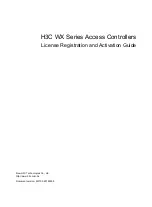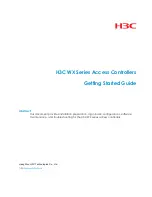
5-112
N60 NETWORK STABILITY AND SYNCHROPHASOR MEASUREMENT SYSTEM – INSTRUCTION MANUAL
PRODUCT SETUP
CHAPTER 5: SETTINGS
5
local time these provide. When the RTC is synchronized with a communications protocol providing only UTC (such as PTP or
SNTP), the time offset setting is used to determine local time from the UTC provided. PTP
ALTERNATE_TIME_OFFSET_INDICATOR TLVs are not used to calculate local time.
DAYLIGHT SAVINGS TIME
and
DST
— Can be used to allow the relay to follow the DST rules of the local time zone. Note that
when IRIG-B time synchronization is active, the local time in the IRIG-B signal contains any daylight savings time offset and
so the DST settings are ignored.
5.3.8 User-programmable fault report
SETTINGS
PRODUCT SETUP
USER-PROGRAMMABLE FAULT REPORTS
USER-PROGRAMMABLE FAULT REPORT
1(2)
When enabled, this function monitors the pre-fault trigger. The pre-fault data are stored in the memory for prospective
creation of the fault report on the rising edge of the pre-fault trigger. The element waits for the fault trigger as long as the
pre-fault trigger is asserted, but not shorter than 1 second. When the fault trigger occurs, the fault data is stored and the
complete report is created. If the fault trigger does not occur within 1 second after the pre-fault trigger drops out, the
element resets and no record is created.
The user programmable record contains the following information: the user-programmed relay name, detailed firmware
revision (x.xx, for example) and relay model (N60), the date and time of trigger, the name of pre-fault trigger (a specific
FlexLogic operand), the name of fault trigger (a specific FlexLogic operand), the active setting group at pre-fault trigger, the
active setting group at fault trigger, pre-fault values of all programmed analog channels (one cycle before pre-fault trigger),
and fault values of all programmed analog channels (at the fault trigger).
Each fault report is stored as a file to a maximum capacity of ten files. An eleventh trigger overwrites the oldest file. The
EnerVista software is required to view all captured data. A FAULT RPT TRIG event is automatically created when the report
is triggered.
The relay includes two user-programmable fault reports to enable capture of two types of trips (for example, trip from
thermal protection with the report configured to include temperatures, and short-circuit trip with the report configured to
include voltages and currents). Both reports feed the same report file queue.
The last record is available as individual data items via communications protocols.
PRE-FAULT 1 TRIGGER
— Specifies the FlexLogic operand to capture the pre-fault data. The rising edge of this operand stores
one cycle-old data for subsequent reporting. The element waits for the fault trigger to actually create a record as long as
the operand selected as
PRE-FAULT 1 TRIGGER
is “On.” If the operand remains “Off” for 1 second, the element resets and no
record is created.
FAULT 1 TRIGGER
— Specifies the FlexLogic operand to capture the fault data. The rising edge of this operand stores the
data as fault data and results in a new report. The trigger (not the pre-fault trigger) controls the date and time of the
report.
FAULT REPORT 1 #1
to
FAULT REPORT 1 #32
— These settings specify an actual value such as voltage or current magnitude,
true RMS, phase angle, frequency, temperature, and so on, to be stored when the report is created. Up to 32 channels can
be configured. Two reports are configurable to cope with variety of trip conditions and items of interest.
USER-PROGRAMMABLE
FAULT REPORT 1
FAULT REPORT 1
FUNCTION: Disabled
Range: Disabled, Enabled
PRE-FAULT 1 TRIGGER:
Off
Range: FlexLogic operand
FAULT 1 TRIGGER:
Off
Range: FlexLogic operand
FAULT REPORT 1 # 1:
Off
Range: Off, any actual value analog parameter
FAULT REPORT 1 #32:
Off
Range: Off, any actual value analog parameter
















































